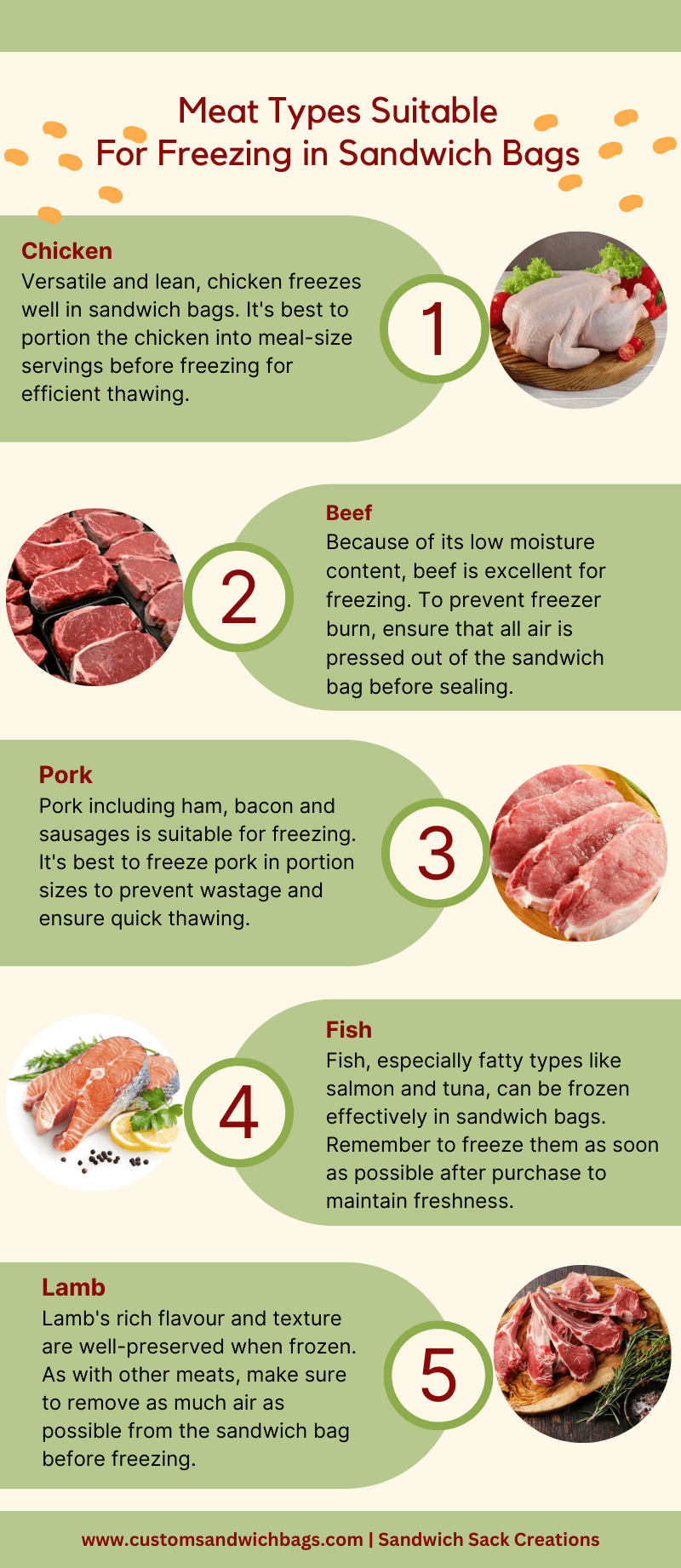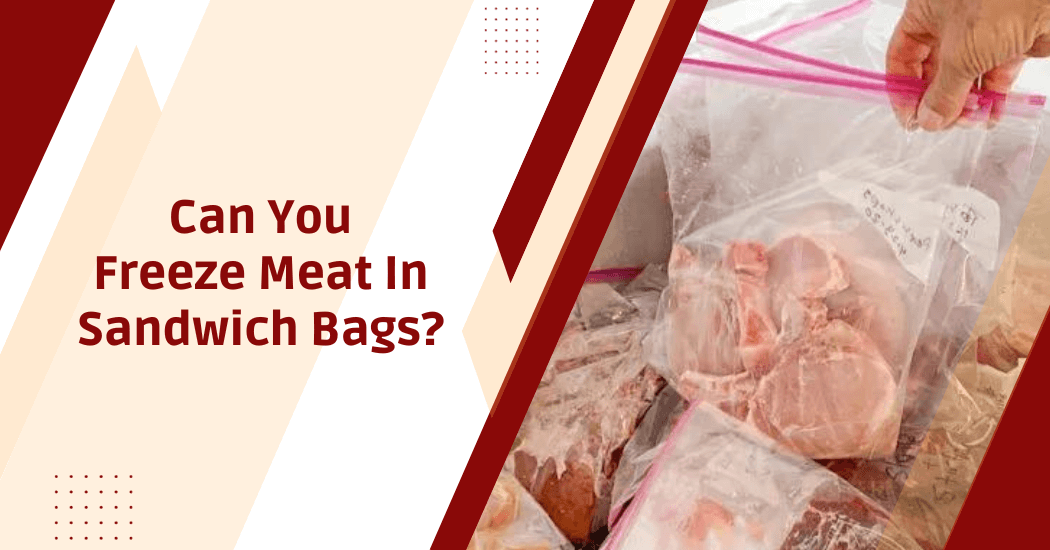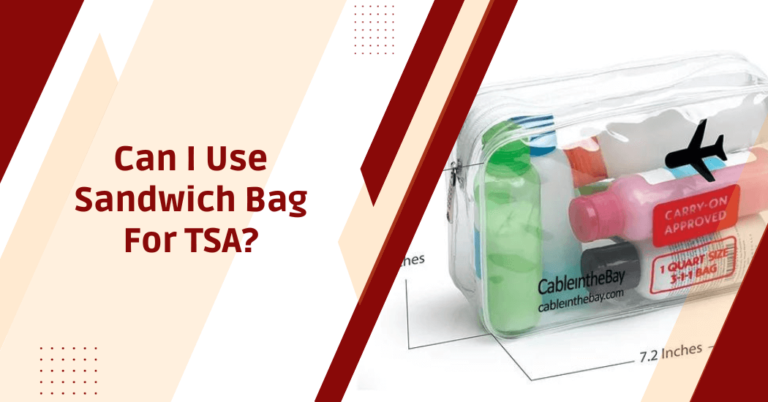Can you freeze meat in sandwich bags?
Freezing meat is a common practice for many households to extend the shelf-life of their food purchases. But when it comes to appropriate storage methods, questions often arise about suitable materials. One common query is whether it’s safe and effective to freeze meat in sandwich bags.
In this discussion, we will explore the practicality, safety and effectiveness of using sandwich bags as a means to freeze meat, considering both the advantages and potential drawbacks of this approach.
Understanding the best practices for freezing meat can help you make informed decisions about preserving your favorite cuts while minimizing food waste and maximizing convenience.
Can you freeze meat in sandwich bags?
Yes, you can freeze meat in sandwich bags but it is important to note that not all sandwich bags are created equal. In general, high-quality, freezer-safe sandwich bags offer a suitable way to freeze meat for short-term storage (a few weeks at most). They are a practical and cost-effective way to divide meat into meal-sized portions.
However, for long-term storage, vacuum-sealed bags or heavy-duty freezer bags are preferable. They provide better insulation and are designed to prevent freezer burn, maintaining the quality and flavor of the meat for longer periods.
Remember to always squeeze as much air as possible out of the sandwich bag before sealing it to minimize freezer burn.
Benefits of using sandwich bags for freezing meat
Using sandwich bags for freezing meat comes with several benefits:
- Cost-effective: Sandwich bags are generally cheaper than other food storage solutions, making them a cost-effective choice for freezing meat. They are readily available in most grocery stores.
- Portion control: These bags are perfect for portioning meat into meal-sized quantities before freezing. This approach helps reduce food waste, as you only need to thaw what you need for each meal.
- Space-saving: Sandwich bags are flexible and can be laid flat or stacked in the freezer, helping to maximize storage space.
- Versatility: Sandwich bags are versatile and can be used for various types of meat – from chicken and beef to fish and pork.
- Visibility: Because most sandwich bags are clear, you can easily see what’s inside without having to open the bag, making it easier to keep inventory of your frozen goods.
Types of meat suitable for freezing in sandwich bags
Various types of meat are suitable for freezing in sandwich bags, including but not limited to:
- Poultry: Chicken and turkey, whether whole, in parts or ground, can be stored effectively in sandwich bags.
- Beef: Ground beef, steaks or roasts are suitable for freezing in sandwich bags, especially for short-term storage.
- Pork: Whether it’s pork chops, ground pork or even bacon, sandwich bags can serve as a convenient short-term storage solution.
- Fish: Most fish, including salmon, cod and tilapia, freeze well in sandwich bags. However, as fish can be delicate, extra care should be taken to remove as much air as possible to prevent freezer burn.
- Seafood: Shrimp, scallops and other types of shellfish can also be stored in sandwich bags.

Remember, while sandwich bags can be used for freezing meat, they are best for short-term storage.
For longer storage periods, consider using heavy-duty freezer bags or vacuum-sealed bags to better protect against freezer burn and maintain the quality of the meat.
How to properly freeze meat in sandwich bags?
To properly freeze meat in sandwich bags, you should follow the steps below:
- Portion the meat: Firstly, portion your meat into meal-sized quantities. This will make it easier to thaw only what you need when the time comes to use the meat, reducing waste.
- Prepare the bags: Ensure the sandwich bags you’re using are marked as freezer-safe. These are typically thicker and more durable than regular sandwich bags, offering better protection against freezer burn.
- Pack the meat: Place each portion of meat into a sandwich bag. Make sure not to overfill the bag, as this could lead to leakage or tearing in the freezer.
- Remove air: Press as much air as possible out of the bag before sealing it. Air exposure can lead to freezer burn, affecting the taste and quality of the meat.
- Label the bags: Use a permanent marker to label each bag with the type of meat and the date it was frozen. This will help you keep track of what’s in your freezer and ensure you use the meat within its optimal quality period.
- Store in Freezer: Finally, place the bagged meat in the coldest part of your freezer, usually at the back, where the temperature is most stable.
Considerations when freezing meat in sandwich bags
When using sandwich bags for freezing meat, it’s important to keep the following factors in mind:
- Quality of the bag: Not all sandwich bags are created equal. Freezer-safe bags are thicker and more durable than regular sandwich bags, providing better protection against freezer burn.
- Length of storage: Sandwich bags are suitable for short-term storage (a few weeks at most). For longer periods, consider using heavy-duty freezer bags or vacuum-sealed bags.
- Type of meat: Some meats freeze better than others in sandwich bags. Delicate meats like fish and seafood may require extra care when removing air from the bag to avoid freezer burn.
- Proper labeling: To ensure you use your frozen meat within its optimal quality period, always label your sandwich bags with the type of meat and the date it was frozen.
- Overpacking: Avoid stuffing too much meat into a single bag. Overpacking can lead to leakage or tearing, compromising the quality of the frozen meat.
- Freezing temperature: For best results, make sure to place the sandwich bagged meat in the coldest part of your freezer, typically at the back. This will help maintain a consistent freezing temperature and prevent fluctuations that can affect the quality of the meat.
FAQs – Freezing Meat in Sandwich Bags
How long can you store meat in sandwich bags in the freezer?
Sandwich bags are suitable for short-term storage of a few weeks at most. For longer storage periods, consider using heavy-duty freezer bags or vacuum-sealed bags.
Why is it important to remove air from the sandwich bags before freezing meat?
Removing air from the sandwich bag before freezing meat is crucial because air exposure can lead to freezer burn which affects the taste and quality of the meat.
Why should I label the sandwich bags before freezing the meat?
Labeling the bags with the type of meat and the date it was frozen helps you keep track of what’s in your freezer and ensure you use the meat within its optimal quality period.
Can I reuse sandwich bags for freezing meat?
You can reuse sandwich bags if they’re in good condition and have been thoroughly cleaned but it’s often more convenient to use new bags for hygiene reasons.
What are common issues when freezing meat in sandwich bags?
Common issues include freezer burn, odor absorption and the potential for bags to tear or leak if not properly sealed.
Final Words
It is possible to freeze meat in sandwich bags but it is important to consider the type and quality of the bag, as well as the length of storage time desired. Properly preparing and labeling the meat before storing it can also help ensure its quality and safety when thawed for use.
Sandwich bags offer a cost-effective and practical solution for short-term storage of various types of meat but for longer periods, using higher-quality freezer bags or vacuum-sealed bags is recommended.
With these tips in mind, you can confidently freeze your meat in sandwich bags without worrying about compromising its quality. Remember to always follow proper food safety guidelines when handling and storing meat to ensure the best possible results.






